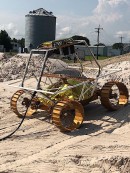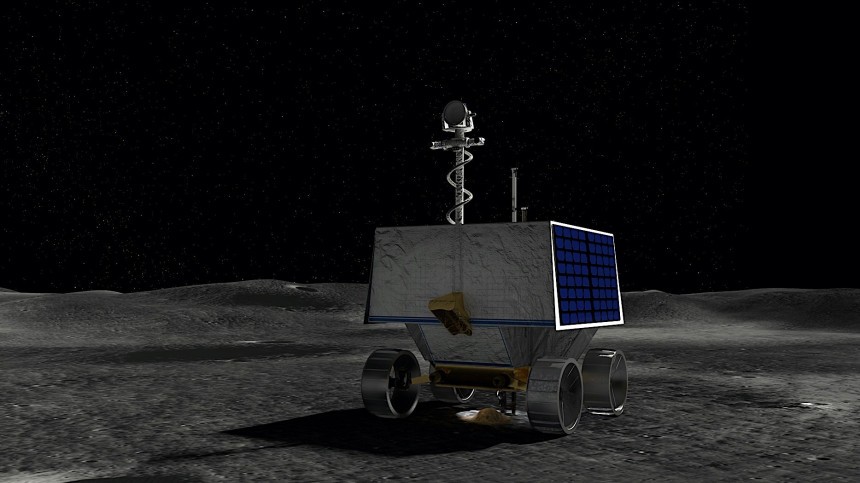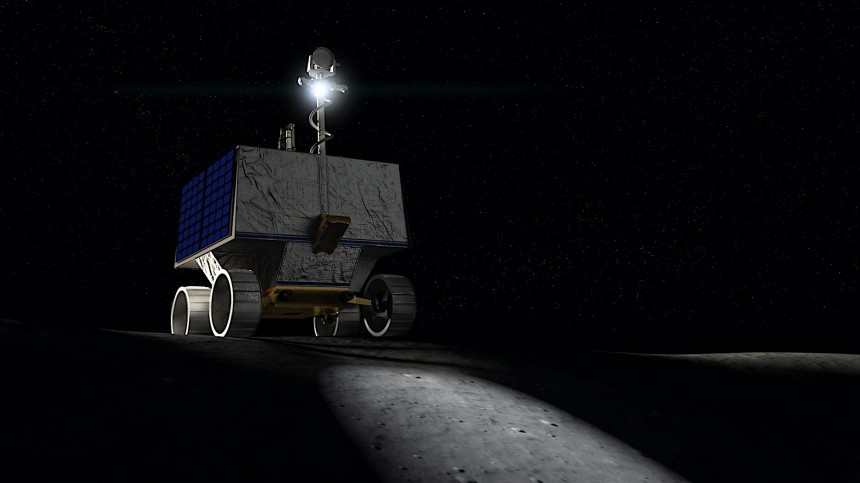At the beginning of the month, we talked a bit about how much water there is out there, floating in our solar system. We were unable to tell you, of course, exactly how much, but to quote NASA, "the Solar System and beyond is awash” in the stuff.
As you all know, water is essential to, well, pretty much everything, especially the survival of us humans, and the success of our missions beyond the final frontier. For now, the limited activities we conduct outside our planet’s atmosphere require us to transport water from the ground, and that is both costly, and inconvenient.
The transport of water for use in missions to the Moon and Mars will be even more so, and NASA is working hard to prevent that. This is why we hear increased chatter about something called in-situ resource utilization (ISRU). In layman’s terms, that would be our ability to use whatever resources are available on the alien worlds we explore. And few resources are as valuable as water.
As said, we know water is aplenty in the solar system, even on the most accessible and closest body we plan to explore: the Moon. But knowing it’s there doesn’t mean we know exactly where it is, and in light of the Artemis program scheduled to kick off later this year, we need better intel.
To help with that, NASA plans to send to the Moon a specially designed rover. It will land there with the specific mission of finding out how much water there is at the Lunar South Pole, as the “first resource mapping mission on another celestial body.”
The rover is called VIPER, which is short for Volatiles Investigating Polar Exploration Rover, and it kind of looks like an early version of Wall-E. It will be launched in late 2023 on board a SpaceX Falcon Heavy rocket, heading for the Nobile Crater where it will spend 100 days “to get a close-up view of the location and concentration of water ice.”
During that time, the rover will cover a distance of 12 miles (20 km), traveling at speeds of just 0.45 mph (0.72 kph). It will not always be on the move, as specific conditions on the Moon, such as very long and cold nights that can last up to a week, will force it to take shelter for days at a time.
VIPER is the size of a golf cart, measuring 5 feet by 5 feet by 8 feet (1.5 meters by 1.5 meters by 2.5 meters), and weighing 992 pounds (450 kilograms) – the heaviest cargo sent into space by NASA using a commercial partner.
The thing is kind of a metal box on wheels, with a metal head and driving lights on top, powered by a solar-charged battery of 450 watts peak power. Thanks to the way it was built, it will be capable of driving "sideways or diagonally, spin in a circle and move in any direction without changing the way it’s facing.” If need be, it will also be able to walk by moving each wheel independently.
During its journey, the rover will look at the lunar soil using three spectrometers. When it finds something of value, it will use a 3.28-foot (1-meter) drill to dig into the surface of the satellite to collect samples and analyze their contents. It will be able to find data about the distribution, physical state and composition of ice deposits.
According to NASA, the VIPER “will venture into permanently shadowed craters, some of the coldest spots in the solar system, where water ice reserves have endured for billions of years.”
The findings of the VIPER rover will be crucial for our future in the solar system. First up, the map it’s going to make will help planners determine future landing sites for Artemis missions, and dream up a way for us humans to stay up there for longer.
Then, this map will help scientist better understand the sources of water on the Moon, in essence discovering where it came from. In doing so, humans will get a better understanding of how things stand elsewhere in the Solar System.
All of the above technically makes VIPER one of the most important science missions ever sent to the Moon, one that, if you ask us, is long overdue.
The transport of water for use in missions to the Moon and Mars will be even more so, and NASA is working hard to prevent that. This is why we hear increased chatter about something called in-situ resource utilization (ISRU). In layman’s terms, that would be our ability to use whatever resources are available on the alien worlds we explore. And few resources are as valuable as water.
As said, we know water is aplenty in the solar system, even on the most accessible and closest body we plan to explore: the Moon. But knowing it’s there doesn’t mean we know exactly where it is, and in light of the Artemis program scheduled to kick off later this year, we need better intel.
To help with that, NASA plans to send to the Moon a specially designed rover. It will land there with the specific mission of finding out how much water there is at the Lunar South Pole, as the “first resource mapping mission on another celestial body.”
During that time, the rover will cover a distance of 12 miles (20 km), traveling at speeds of just 0.45 mph (0.72 kph). It will not always be on the move, as specific conditions on the Moon, such as very long and cold nights that can last up to a week, will force it to take shelter for days at a time.
VIPER is the size of a golf cart, measuring 5 feet by 5 feet by 8 feet (1.5 meters by 1.5 meters by 2.5 meters), and weighing 992 pounds (450 kilograms) – the heaviest cargo sent into space by NASA using a commercial partner.
The thing is kind of a metal box on wheels, with a metal head and driving lights on top, powered by a solar-charged battery of 450 watts peak power. Thanks to the way it was built, it will be capable of driving "sideways or diagonally, spin in a circle and move in any direction without changing the way it’s facing.” If need be, it will also be able to walk by moving each wheel independently.
According to NASA, the VIPER “will venture into permanently shadowed craters, some of the coldest spots in the solar system, where water ice reserves have endured for billions of years.”
The findings of the VIPER rover will be crucial for our future in the solar system. First up, the map it’s going to make will help planners determine future landing sites for Artemis missions, and dream up a way for us humans to stay up there for longer.
Then, this map will help scientist better understand the sources of water on the Moon, in essence discovering where it came from. In doing so, humans will get a better understanding of how things stand elsewhere in the Solar System.
All of the above technically makes VIPER one of the most important science missions ever sent to the Moon, one that, if you ask us, is long overdue.










